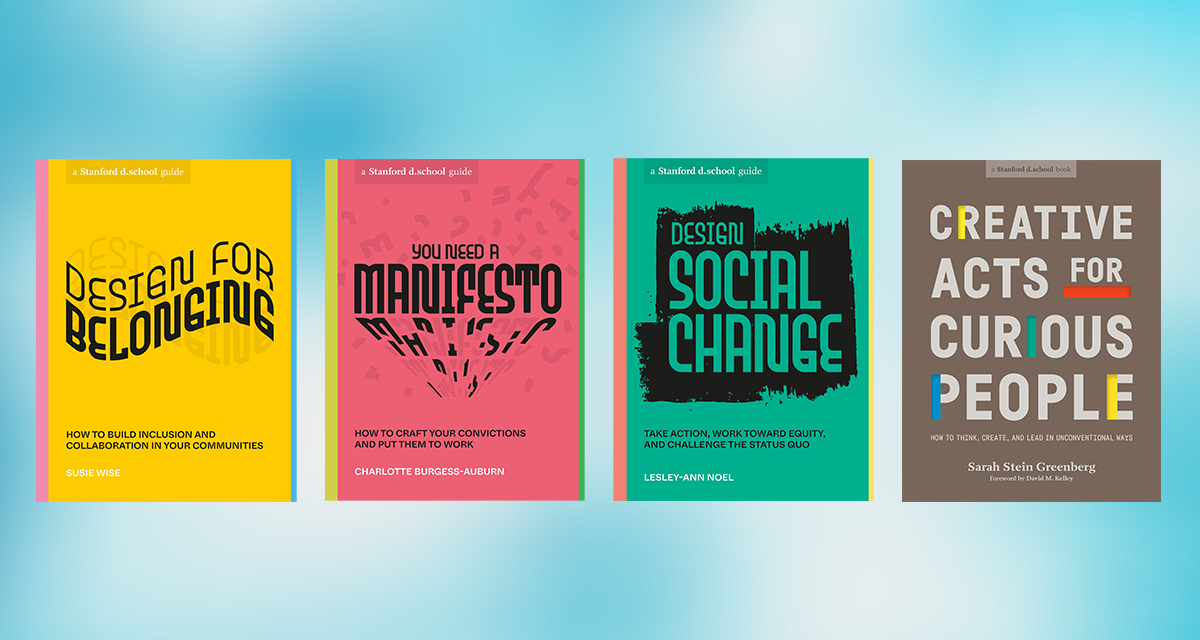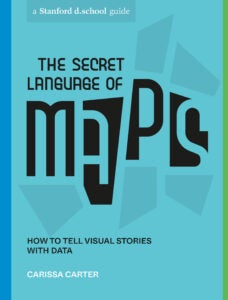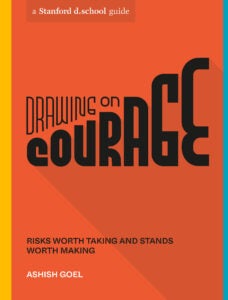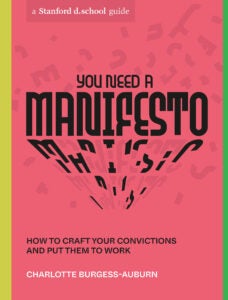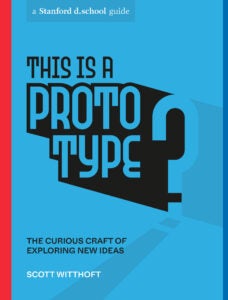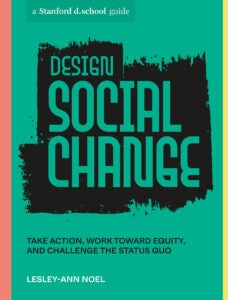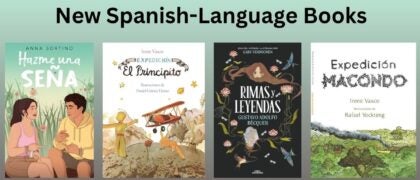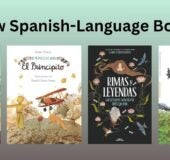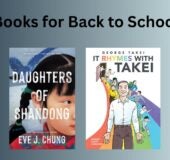At Stanford University’s world-renowned Hasso Plattner Institute of Design, aka “the d.school,” teachers and learners of all ages bring together their diverse perspectives and backgrounds to tackle ambitious projects. Whether your students are interested in making an impact in the social sector or the business world, the d.school’s approach to design helps uncover hidden possibilities and bring them into the world.
The d.school has published these books to help students adapt to change, see challenges and opportunities in new ways, connect and collaborate with others, and step confidently into the often ambiguous future. The methods, activities, and stories presented in these books offer students the creative groundwork they’ll need in life and in work, across disciplines and fields.
Learn more about these books below and browse educator guides designed to help you bring them into your curriculum.
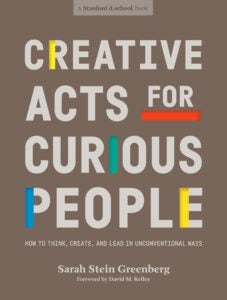 Creative Acts for Curious People: How to Think, Create, and Lead in Unconventional Ways
Creative Acts for Curious People: How to Think, Create, and Lead in Unconventional Ways
By Sarah Stein Greenberg; Foreword by David M. Kelley; Illustrated by Michael Hirshon
Curated by executive director Sarah Stein Greenberg, after being honed in the classrooms of the d.school, these memorable stories and more than 80 innovative exercises will help students develop the behaviors and deepen the mindsets that can turn their curiosity into ideas, and their ideas into action.
Educator Guide
 Design for Belonging: How to Build Inclusion and Collaboration in Your Communities
Design for Belonging: How to Build Inclusion and Collaboration in Your Communities
By Susie Wise; Illustrated by Rose Jaffe
A practical, illustrated guide to using the tools of design to create feelings of inclusion, collaboration, and respect in groups of any type or size—from a classroom or a work team to an international organization.
Educator Guide
The Secret Language of Maps: How to Tell Visual Stories with Data
By Carissa Carter; Illustrated by Jeremy Nguyen and Michael Hirshon
Maps aren’t just geographic, they are also infographic and include all types of frameworks and diagrams. This is a highly visual exploration of diagrams and data that helps students understand how “maps” are part of everyday thinking, how they tell stories, and how they can reframe your point of view.
Educator Guide
Drawing on Courage: Risks Worth Taking and Stands Worth Making
By Ashish Goel; Illustrated by Ruby Elliot
A practical, illustrated guide to overcoming the challenges of creative work, including where to start, how to give or get feedback, when to change direction, and how to stand up for what matters.
Educator Guide
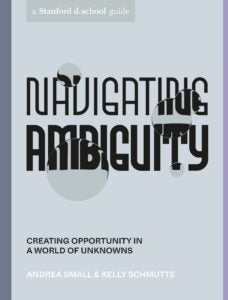 Navigating Ambiguity: Creating Opportunity in a World of Unknowns
Navigating Ambiguity: Creating Opportunity in a World of Unknowns
Andrea Small and Kelly Schmutte; Illustrated by Reina Takahashi; Photographs by Andria Lo
A design process presents a series of steps, but in real life, it rarely plays out this neatly. Navigating Ambiguity underscores how the creative process isn’t formulaic. This book shows students how to surrender control by being adaptable, curious, and unbiased as well as resourceful, tenacious, and courageous.
Educator Guide
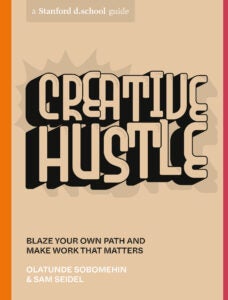 Creative Hustle: Blaze Your Own Path and Make Work That Matters
Creative Hustle: Blaze Your Own Path and Make Work That Matters
By Olatunde Sobomehin and sam seidel; Photographs by Khristopher “Squint” Sandifer; Illustrated by Jori Tytus and Hope Meng
Olatunde Sobomehin and sam seidel, co-teachers of the Creative Hustle course at Stanford University, help students identify and navigate their own creative path that leads from their gifts to their goals. Taking inspiration and lessons from creative problem-solvers and using activities from the Creative Hustle course, students will begin to see and shape their own path.
Educator Guide
You Need a Manifesto: How to Craft Your Convictions and Put Them to Work
By Charlotte Burgess-Auburn
In You Need a Manifesto, Charlotte Burgess-Auburn, the d.school’s director of community, explains the importance of creating a personal mantra or motto to use in the face of daily tasks and roadblocks, walking students through the steps of creating more purpose in their work. This is an essential how-to for crafting a guiding motto that sets intentions, increases creativity, and helps accomplish goals.
Educator Guide
This Is a Prototype: The Curious Craft of Exploring New Ideas
By Scott Witthoft
Prototyping is a way to test an idea to see if it can be successful before investing too much time and too many resources. With Scott Witthoft, who teaches courses in design and prototyping to students around the world, as their guide, students will put the principles of design into practice and bring their vision to life—one prototype at a time.
Educator Guide
Design Social Change: Take Action, Work toward Equity, and Challenge the Status Quo
By Lesley-Ann Noel
Who are you? What motivates you as a changemaker? What forces are preventing you (and others) from thriving? These questions are essential to the work of creating social change, and they are exactly what Design Social Change asks students to explore. Using the tools of design, these new approaches will help them craft projects that are relevant to creating more just, equitable futures.
Educator Guide
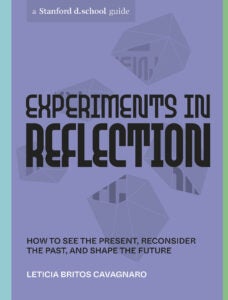 Experiments in Reflection: How to See the Present, Reconsider the Past, and Shape the Future
Experiments in Reflection: How to See the Present, Reconsider the Past, and Shape the Future
By Leticia Britos Cavagnaro; Illustrated by Gabriela Sánchez
While we often think of reflection as a way to consider what is or was, it can also be a powerful tool for imagining and shaping what could be. Through activities based on the science, art, and practice of reflection, this book guides students through simple experiments that teach how to make meaning from one’s experiences and, as a result, support their goals and values.
Educator Guide
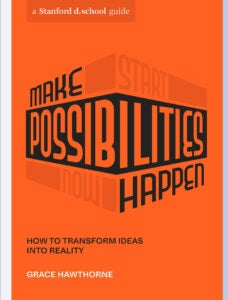 Make Possibilities Happen: How to Transform Ideas into Reality
Make Possibilities Happen: How to Transform Ideas into Reality
By Grace Hawthorne; Designed by Celia Leung
Discover tools and strategies for students to overcome hang-ups and build the creative capacity of their brains. Award-winning author Grace Hawthorne shares insights, ideas, and activities from the Stanford University d.school courses she teaches, as well as scientific research and entrepreneurial escapades to get students thinking productively toward making possibilities a reality.
Educator Guide
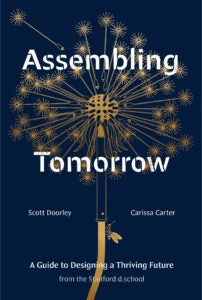 Assembling Tomorrow: A Guide to Designing a Thriving Future from the Stanford d.school
Assembling Tomorrow: A Guide to Designing a Thriving Future from the Stanford d.school
By Scott Doorley and Carissa Carter; Illustrated by Armando Veve
From experts working at the intersection of design, technology, and learning, this guide explores how to use readily accessible tools to both mend the mistakes of our past and shape our future for the better. From social media to AI and climate change, Assembling Tomorrow casts a critical but hopeful eye on our collective responsibility as designers of our own futures.
Educator Guide

